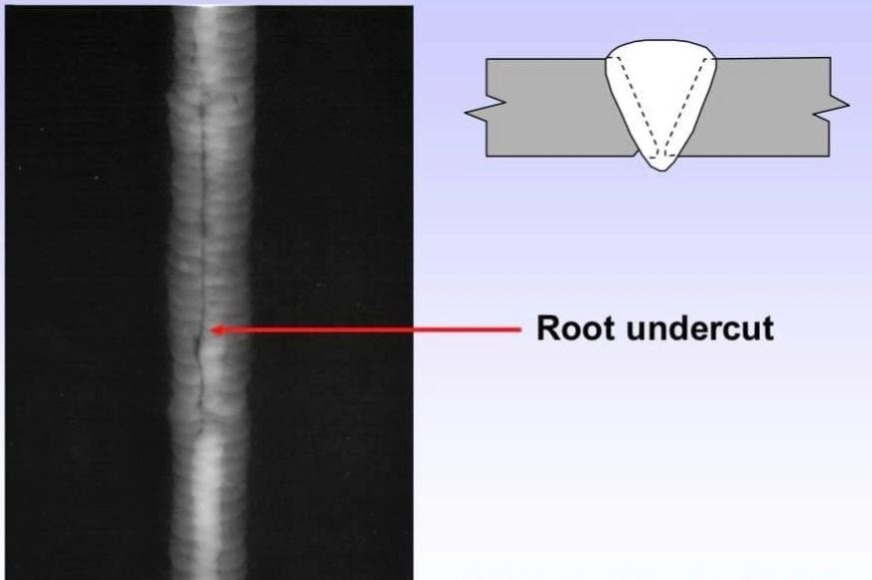Preventing Weld Undercut: Proven Approaches Every Welder Must Know
Preventing Weld Undercut: Proven Approaches Every Welder Must Know
Blog Article
A Comprehensive Overview to Identifying, Averting, and Mending Undercut Welding Issues in Your Welding Jobs
In the realm of welding, coming across undercut concerns is a typical challenge that can endanger the architectural integrity and general top quality of your welding jobs. Stay tuned as we check out the essential elements of recognizing, avoiding, and dealing with undercut welding problems, offering you with useful understandings and techniques to boost your welding abilities to the next level.
Typical Reasons of Undercut Welding
Undercut welding, a common problem in welding procedures, can be created by numerous factors that need to be very carefully recognized and addressed to guarantee the stability of the weld joint. One of the primary reasons for undercut welding is too much warmth input. When the welding parameters, such as voltage, current, or travel speed, are not appropriately established, a too much quantity of heat can be generated. This excess heat results in the melting and succeeding elimination of the base material along the edges of the weld joint, producing a groove understood as undercut.
An additional typical reason for undercut welding is incorrect welding strategy. Poor adjustment of the welding lantern or gun, inaccurate angle or distance in between the lantern and the work surface, or irregular traveling speed can all add to the development of undercut. Furthermore, utilizing the wrong welding consumables or electrode size for a certain joint setup can result in undercut issues. Identifying these origin and implementing rehabilitative actions is crucial in protecting against and fixing undercut welding issues in welding projects.
Identifying Undercut in Welds

To recognize undercut properly, correct lights and magnifying devices are vital to examine the weld joint thoroughly. Using tools such as a welding gauge or a magnifying glass can aid in detecting even the tiniest undercut blemishes. In addition, running a finger or a finger nail along the weld joint can occasionally disclose undercut, as the surface area might really feel unequal or have a dip where the undercut exists.
Safety Nets for Undercut
Having a deep understanding of the reasons for undercut in welds enables for the application of effective safety nets to keep weld top quality and stability. One important precautionary step appertains weld joint prep work. Making certain that the sides are clean, without impurities, and effectively beveled can substantially decrease the likelihood of undercut (Preventing weld undercut). In addition, choosing the suitable welding parameters, such as voltage, existing, click this and travel rate, is necessary. These settings need to be enhanced to stop too much warmth input, which can lead to undercut formation.

Strategies for Fixing Undercut

To resolve undercut concerns efficiently, welders can employ details strategies aimed at rectifying the issue and bring back the integrity of the weld joint. One strategy is to change the welding parameters, such as the voltage, existing, and travel rate, to make sure proper warmth input and combination. Increasing the welding existing or decreasing the traveling speed can aid fill out the undercut. Additionally, transforming the welding technique from a press to a drag or vice versa can additionally help decrease undercut.
Another method is to use a weaving movement while welding to make certain appropriate sidewall blend and fill in the undercut. By oscillating the welding arc from side to side within the weld joint, the welder can transfer extra filler material into the undercut locations, effectively getting rid of the issue.
In addition, grinding out the undercut and rewelding the joint can be a practical remedy for more serious undercut concerns - Preventing weld undercut. This process includes getting rid of the undercut area, preparing the base metal, and after that rewelding the joint with correct welding parameters and methods to avoid undercut from persisting

Expert Tips for Preventing Undercut
Using correct welding techniques and preserving control over vital welding criteria are essential techniques for welders intending to stop undercut in their this link weld joints. Furthermore, choosing the suitable welding procedure and filler steel for the specific application can assist stop undercut. Maintaining a consistent travel rate throughout the welding procedure is another vital pointer to prevent undercut.
Conclusion
To conclude, determining, protecting against, and fixing undercut welding issues in your welding jobs is critical for ensuring long lasting and solid welds. Preventing weld undercut. By recognizing the common sources of undercut, being able to identify it in welds, executing safety nets, and using appropriate methods for taking care of undercut, you can stay clear of prospective problems and important site produce premium welds. Complying with professional suggestions for preventing undercut can assist you improve your welding skills and produce far better outcomes in your tasks
Undercut welding, a typical problem in welding processes, can be caused by numerous variables that require to be very carefully determined and addressed to ensure the integrity of the weld joint. In addition, running a finger or a finger nail along the weld joint can often reveal undercut, as the surface might feel uneven or have a dip where the undercut exists.
Making use of correct welding methods and maintaining control over key welding criteria are vital methods for welders aiming to prevent undercut in their weld joints.In conclusion, recognizing, preventing, and taking care of undercut welding issues in your welding jobs is important for guaranteeing solid and sturdy welds. By recognizing the typical reasons of undercut, being able to determine it in welds, carrying out precautionary measures, and using proper methods for repairing undercut, you can stay clear of prospective concerns and create high-grade welds.
Report this page